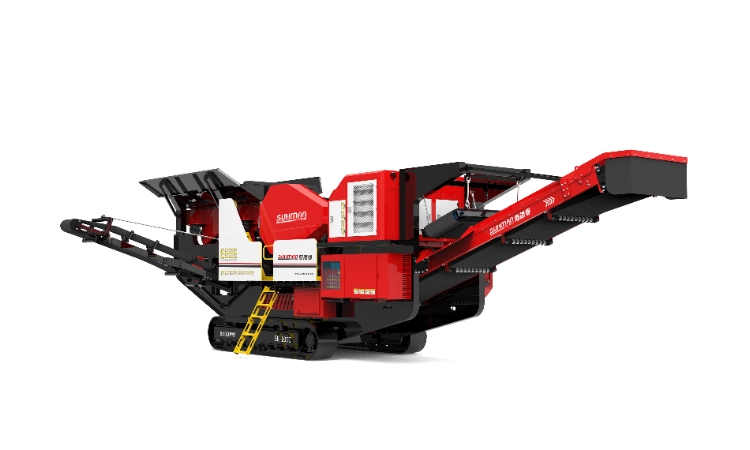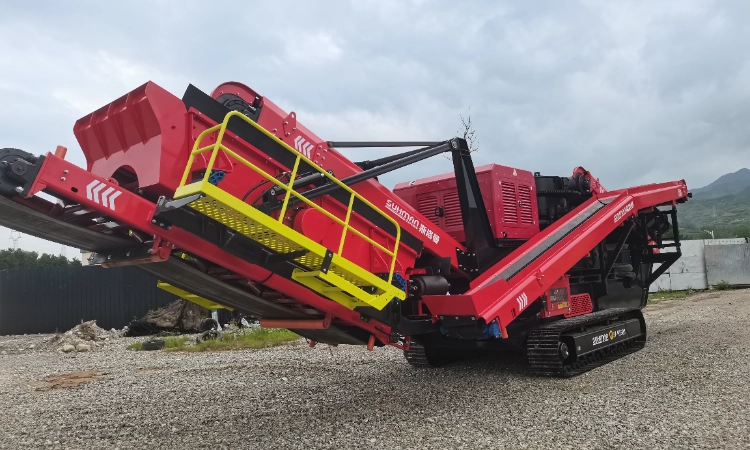Common Faults and Troubleshooting of Jaw Crusher and Cone Crusher
Release time: 2025-05-03
Common Crusher Failures and Solutions in the Mining Industry
Crushers are vital equipment in the mining industry, serving as the starting point of the entire processing workflow. Understanding common crusher failures and their solutions is essential for maintaining operational efficiency. This article outlines typical faults and troubleshooting methods for crushers, providing a reference for industry professionals.
1. Common Faults and Solutions for Jaw Crushers
Jaw crushers operate by changing the volume between a fixed jaw plate and a movable jaw plate, crushing ore through squeezing, bending, and splitting actions. Typically used for coarse crushing, jaw crushers are prone to faults due to their demanding operating conditions. Below are common issues and their solutions:
- Issue: Accelerated Wear of Toggle Plate and Toggle Seat
- Cause: High dust levels and poor lubrication between the toggle plate head and toggle seat result in dry friction, accelerating wear. The movable jaw plate endures combined bending, tensile, and shear stresses under pulsating cyclic loads, leading to severe wear of the jaw teeth.
- Solutions:
- Adopt a rolling-type toggle plate structure (as opposed to sliding-type) to improve lubrication. Rolling-type designs allow lubricant to distribute evenly across friction surfaces, reducing wear.
- Install dust shields above the toggle plate joint to prevent dust and fine particles from exacerbating wear.
- Use a modular toggle plate design, where only the toggle plate head is replaced when worn, reducing costs.
- Select high-wear-resistance materials, such as ZGMn17Cr2 high-manganese steel, for the jaw plate to enhance durability.
- Design the jaw plate with specific tooth patterns to ensure consistent product particle size.
- Use reversible jaw plates (upper and lower sections) to extend service life by swapping positions when the lower section wears out.
- General Maintenance Tips:
- Regular maintenance and periodic inspections are critical to extending the jaw crusher’s service life and improving operational efficiency.
- Conduct frequent checks, promptly repair or replace defective parts, and regularly inspect and replenish the lubrication system to ensure adequate grease levels.
2. Common Faults and Solutions for Cone Crushers
Fault: Flywheel Phenomenon
Cone crushers operate by transmitting motor power through the drive shaft and bevel gears to rotate the eccentric sleeve. The moving cone performs conical motion around the crusher’s centerline, crushing ore when it approaches the fixed cone and discharging crushed material when it moves away. The moving cone also rotates around its own axis, balancing relative and entrained motion. This self-rotation ensures uniform particle size and reduces liner wear, but the rotation speed should remain between 8–15 rpm to avoid the “flywheel” phenomenon (uncontrolled high-speed rotation).
- Causes of Flywheel Phenomenon:
- Excessively Small Clearance: Insufficient gap between the main shaft and its bushing causes excessive friction.
- Poor Lubrication: Inadequate lubrication increases friction, raising oil temperature and potentially melting metal, leading to shaft seizure.
- Worn Spherical Bearings: Wear or other issues cause the moving cone to sink, reducing the gap between the main shaft and bushing.
- Solutions:
- Adjust the clearance between the main shaft and bushing to ensure proper spacing.
- Improve lubrication by using high-quality lubricants and maintaining a consistent lubrication schedule to prevent overheating and friction.
- Regularly inspect and replace worn spherical bearings to maintain proper alignment and prevent cone sinking.
- Monitor and control the moving cone’s rotation speed to stay within the recommended range (8–15 rpm).
Equipment Applications
Granite Ultra-High-Performance Crushing Host
- Features: Robust production capacity and advanced material processing technology.
- Applications:
- Municipal: Road resurfacing, construction concrete, and fill materials.
- Engineering: Railways, highways, water conservancy, and specialized projects.
- Quarries: On-demand crushing for engineering and specialized projects.
- Mining: Surface mining and natural sand/gravel processing.
- Demolition: On-site crushing for professional demolition and blasting operations.
- Construction Waste Recycling: Tailings, slag, and material regeneration.
By addressing these common faults with proactive maintenance and targeted solutions, operators can enhance crusher reliability, minimize downtime, and optimize mining operations.Selecting the Right Crushing and Screening Equipment for Sand and Gravel Aggregate ProductionCrawler vs. Tire Mobile Crushing Stations: Key Differences and ApplicationsCrawler mobile crushing and screening machine is suitable for rocks, pebbles, construction waste, ore tailings, iron ore, molybdenum ore, coal




